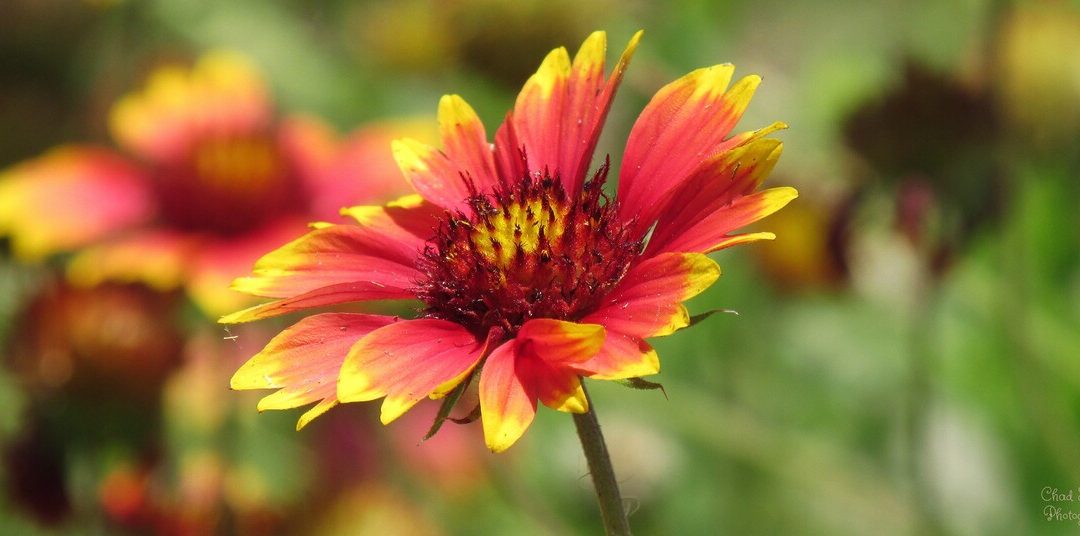The best plants for New Mexico thrive in the local climate. Native plants can endure Southwestern droughts and temperatures that frequently soar to 100 degrees Fahrenheit in the summer. Planting native plants in your New Mexico landscape design provides many benefits, including:
- They are adapted to the local climate and soil.
- They are resistant to local pests and diseases.
- They increase biodiversity by attracting pollinators, birds, and other wildlife.
- They require fewer pesticides and fertilizers.
- They are low-maintenance.
New Mexico’s desert-like environment may seem pretty dry and brown, but the Land of Enchantment is actually home to an abundance of colorful native plants. Here are 11 of the best native plants for your New Mexico landscape.
In this article:
- Artichoke Agave
- Desert Marigold
- Desert Willow
- Hummingbird Mint
- Indian Blanketflower
- New Mexico Beardtongue
- Purple Poppy Mallow
- Soaptree Yucca
- Whorled Milkweed
- Woods’ Rose
- Yarrow
- How to Choose the Best Native Plants for Your New Mexico Landscape
- FAQ About the Best Native Plants for New Mexico
- Where to Find Native Plants in New Mexico
11 Best Native Plants for New Mexico
1. Artichoke Agave (Agave parryi v. truncata)
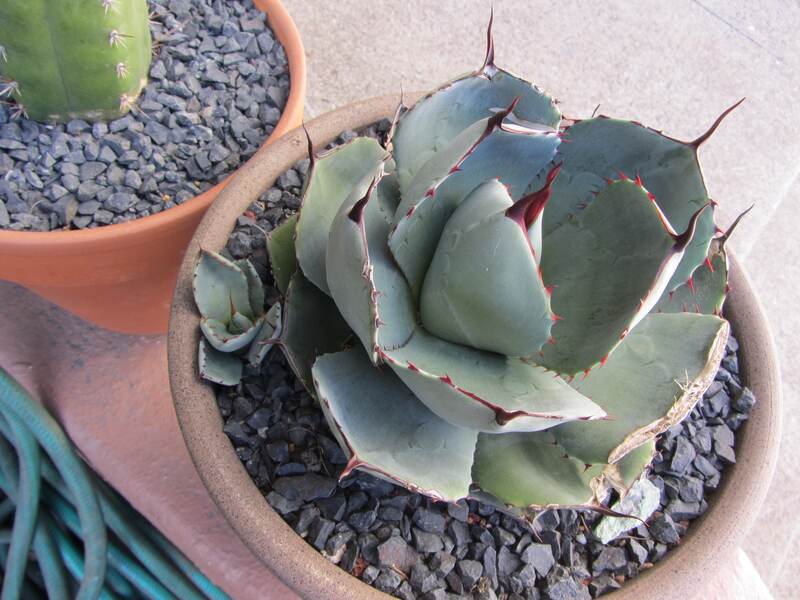
Photo Credit: Akos Kakai / Wikimedia Commons / CC BY-SA 3.0
Artichoke agaves are shaped like squat rosettes with fleshy, blue-gray leaves edged with rust-colored spikes that are prickly to the touch. Also known as Parry’s agave, artichoke agave blooms in the summer, attracting pollinators like birds, hummingbirds, and butterflies.
At the end of its life, artichoke agave grows a tree-like stalk that towers 15 to 20 feet in the air, a rare event that only happens once every 10 years. Clusters of red buds grow at the top of the stem and transform into golden flowers.
The plant is native to Southwest states, including New Mexico, Arizona, and Texas. In the wild, artichoke agaves can be found nestled at the edges of pine or oak forests or making their home in open, rocky deserts. This drought-tolerant succulent grows best in rock or container gardens, making it a great choice for low-maintenance landscapes or drought-resistant yards.
Growth habit: Cactus
USDA hardiness zone: 8-12
Mature size: 1-3 feet tall and 2-4 feet wide
Duration: Perennial
Foliage: Evergreen
Sunlight needs: Full sun
Soil preferences: Dry, rocky or sandy soil
Water needs: Drought-tolerant; does not require water outside of natural rainfall
Potential hazards: Non-toxic; prickly leaves
2. Desert Marigold (Baileya multiradiata)
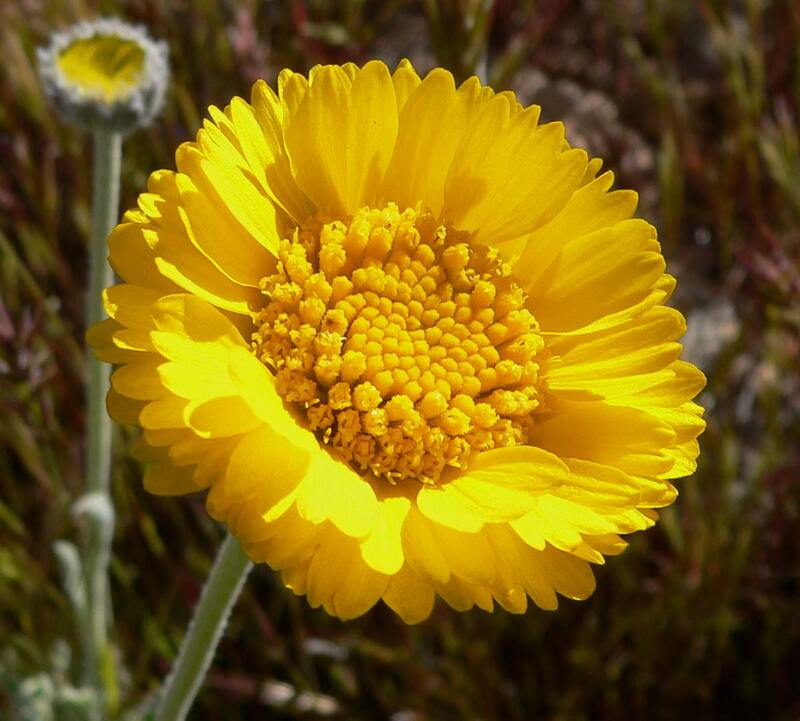
Photo Credit: Stan Shebs / Wikimedia Commons / CC BY-SA 3.0
Desert marigold thrives in hot, flat, sandy regions. It has a rounded shape and sparse gray-green vegetation. Clusters of spindly stems topped with a single, bright yellow flower grow outward from a central mound. The long blooming season begins in March and lasts until November.
The bright flowers attract butterflies and bees. Desert marigold spreads through seed, and one plant produces as many as 50 flowers.
Growth habit: Herbaceous flower
USDA hardiness zone: 7-10
Mature size: 1-2 feet tall and 2-3 feet wide
Duration: Perennial
Foliage: Deciduous
Sunlight needs: Full sun
Soil preferences: Adaptable; well-drained, clay, loam, or sand
Water needs: Drought-tolerant; does not require water outside of natural rainfall
Potential hazards: Toxic; poisonous if ingested
3. Desert Willow (Chilopsis linearis)
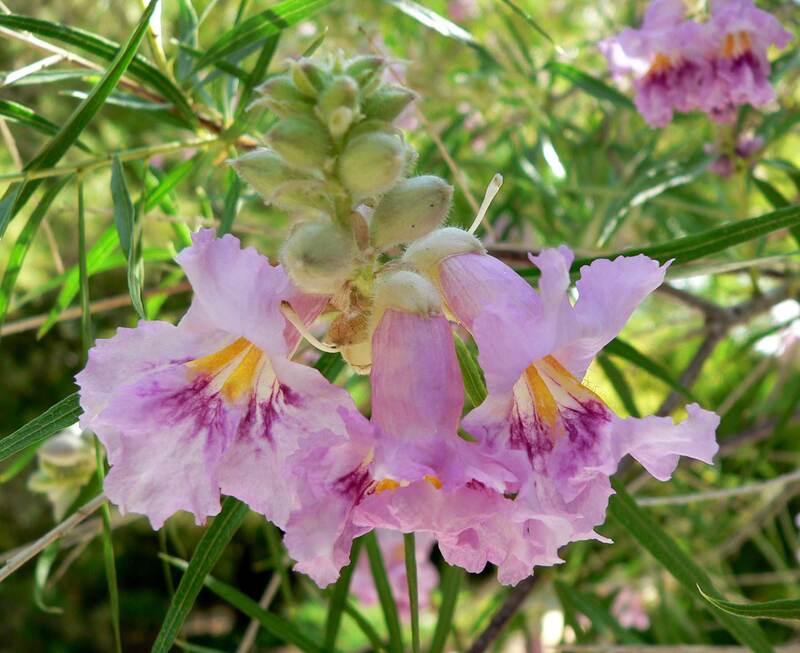
Photo Credit: Stan Shebs / Wikimedia Commons / CC BY-SA 3.0
Despite its name, the desert willow isn’t related to the willow tree. Desert willows are extremely heat and drought-tolerant and grow well in desert terrain. In the spring and summer, their narrow, bright green leaves are graced with white, lavender, or pink flowers growing at the tips of their branches.
Desert willow’s delicate flowers attract hummingbirds and pollinating insects and wildlife eat its seeds. The flowering shrub provides a place for birds to nest, and their gnarly limbs and colorful flowers are easily identifiable. Desert willows need at least six hours of full sun. Grow this vibrant native as an ornamental patio specimen.
Growth habit: Shrub
USDA hardiness zone: 7-11
Mature size: 15-30 feet tall and 10-20 feet wide
Duration: Perennial
Foliage: Deciduous
Sunlight needs: Full sun
Soil preferences: Adaptable; prefers well-drained limestone soil; tolerates sand, loam, clay, caliche, granitic, or rocky soils
Water needs: Drought-tolerant; does not require water outside of natural rainfall
Potential hazards: Non-toxic; no safety hazards
4. Hummingbird Mint (Agastache)
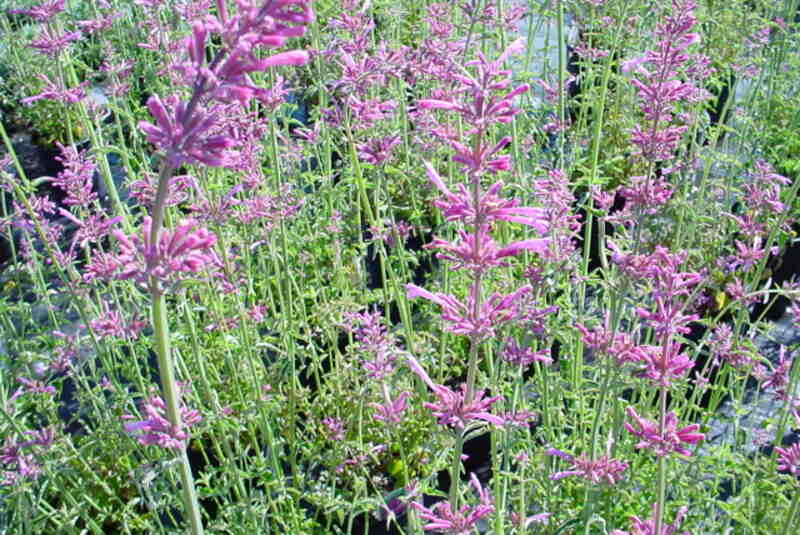
Photo Credit: PlantExpert / Wikimedia Commons / CC BY-SA 3.0
Hummingbird-loving homeowners can add hummingbird mint to their landscape, attracting the fast fliers and pollinating insects with its sweet nectar and vibrant blooms. During the summer, tubular flowers grow in vertical spikes in a collection of fragrant floral clusters.
Hummingbird mint offers a variety of blooms, including pink, red, orange, yellow, blue, purple, and white. Its stems are thin and erect but full of leafy foliage. Hummingbird mint is naturally pest-resistant making it a great addition to beds, borders, containers, and rock gardens.
Growth habit: Herbaceous flower
USDA hardiness zone: 4-10
Mature size: 2-3 feet tall and wide
Duration: Perennial
Foliage: Deciduous
Sunlight needs: Full sun
Soil preferences: Adaptable; moist, well-drained, chalk, clay, loam, or sand
Water needs: Drought-tolerant; water one inch per week during dry periods
Potential hazards: Non-toxic; no safety hazards
5. Indian Blanketflower (Gaillardia pulchella)
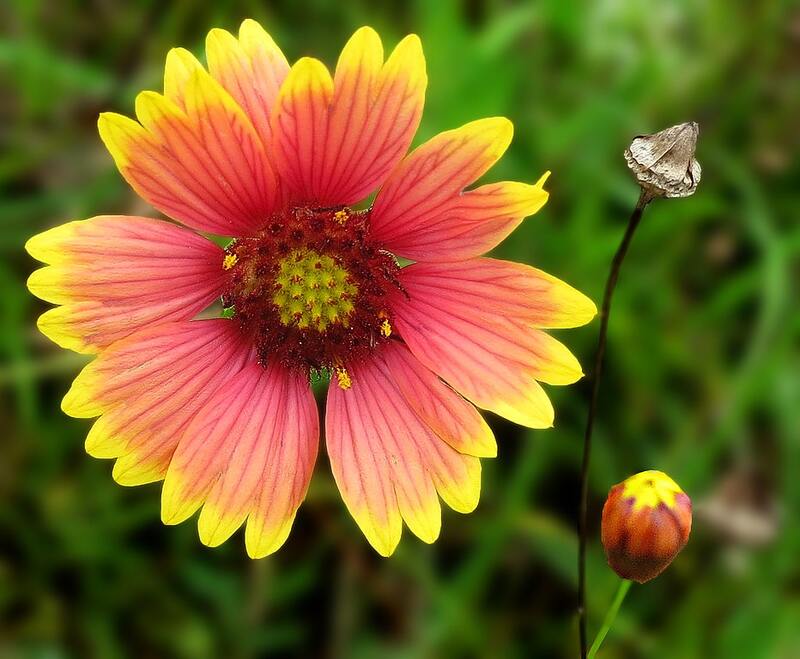
Photo Credit: Jim Evans / Wikimedia Commons / CC BY-SA 4.0
Many believe the Indian blanketflower gets its name from brightly colored blankets woven by Native Americans. Blanketflowers have fiery, yellow-tipped petals that are arranged in a circle around their yellow or burgundy cone center. Blooms grow two to three inches wide atop erect stems.
The vivid red hues make Indian blanketflowers an attention-grabbing flora. The attractive wildflower draws both people and butterflies to its vibrant petals. Birds snack on the seeds and hummingbirds can’t get enough of the flower’s sweet nectar. In the wild, this sun-loving perennial makes its home in prairies and meadows. Plant this colorful specimen in beds, borders, containers, and butterfly or rock gardens.
Growth habit: Wildflower
USDA hardiness zone: 3-8
Mature size: 1-2 feet tall and 1-3 feet wide
Duration: Perennial
Foliage: Evergreen
Sunlight needs: Full sun; partial shade
Soil preferences: Dry, well-drained, loam, chalk, or sand
Water needs: Drought-tolerant; water once per week during dry spells
Potential hazards: Non-toxic; no safety hazards
6. New Mexico Beardtongue (Penstemon neomexicanus)
Despite its strange name, New Mexico beardtongue blossoms into clusters of graceful, bell-shaped flowers on top of tall stems. From May through July, its tubular flowers bloom into drooping clusters of lavender, pink, or white. The perennial invites pollinators and hummingbirds, and New Mexico beardtongue is the larval food source for the rare, endemic Sacramento Mountains checkerspot butterfly.
The plant is leafy at its base with elongated, oval-shaped leaves that end in sharp points. Its foliage is blue-green with a waxy texture. In the wild, this low-maintenance plant grows in meadows, prairies, or woodlands. Plant this vibrant perennial in flower beds and along borders to create a pollinator garden.
Growth habit: Herbaceous Flower
USDA hardiness zone: 5-9
Mature size: 2-4 feet tall and 1-2 feet wide
Duration: Perennial
Foliage: Deciduous
Sunlight needs: Full sun, partial sun
Soil preferences: Well-drained, sand, chalk, or loam
Water needs: Drought-tolerant; water once per week during dry spells
Potential hazards: Non-toxic; no safety hazards
7. Purple Poppy Mallow (Callirhoe involucrata)
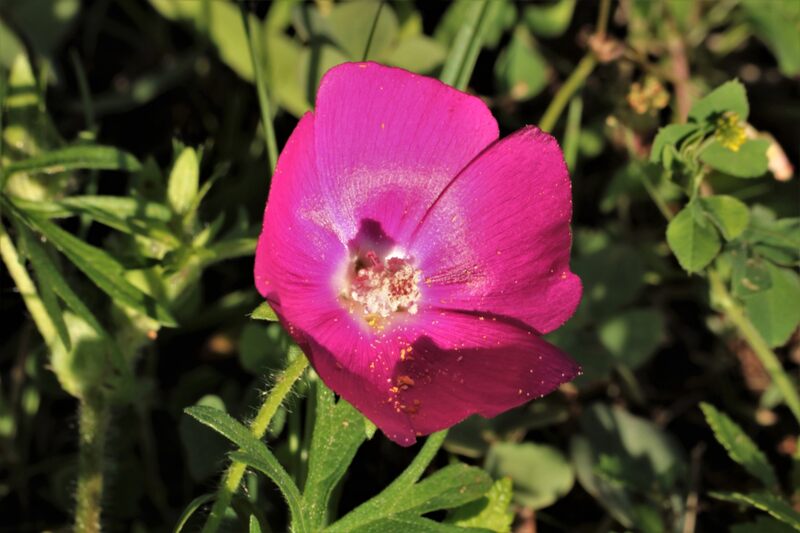
Photo Credit: PublicDomainPictures
Purple poppy mallows grow naturally in prairies and meadows. Blooms are identifiable by their poppy shape and vibrant magenta color. The five petals of purple poppy mallow form a cup-like shape that has earned the wildflower its nickname, “winecup.” Its flowers attract beneficial pollinators like bees, butterflies, and hoverflies as well as some unwelcome guests like predatory wasps.
It blooms from May to June and propagates by self-seeding. The hardy wildflower has a hairy stem and taproot system which makes it difficult to transplant once mature. The leaves and roots of purple poppy mallow are edible and have medicinal properties. This drought-tolerant wildflower makes a great addition to rock gardens, flower beds, and borders.
Growth habit: Herbaceous flower
USDA hardiness zone: 4-8
Mature size: 6-12 inches tall and 2-3 feet wide
Duration: Perennial
Foliage: Semi-evergreen
Sunlight needs: Full sun; partial shade
Soil preferences: Dry, well-drained, rocky or sandy, clay, clay-loam, medium loam, or sand-loam soils
Water needs: Drought-tolerant; water once per week during dry spells
Potential hazards: Non-toxic; edible
8. Soaptree Yucca (Yucca elata)
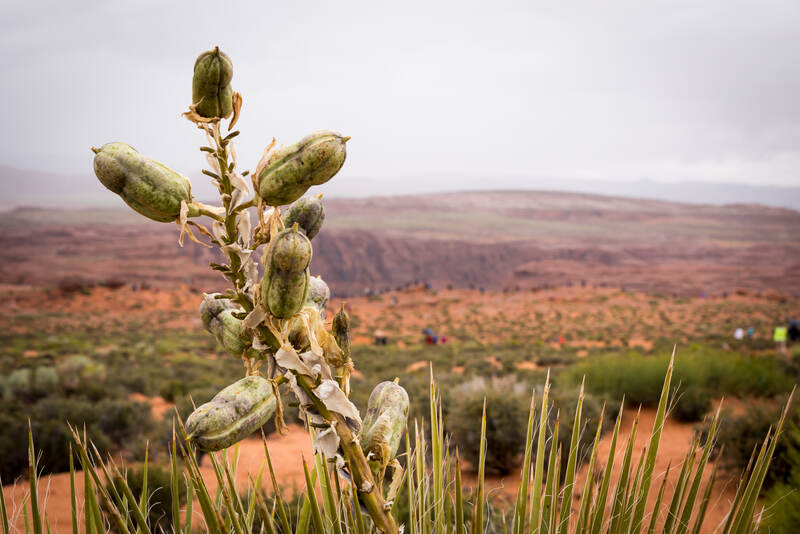
Photo Credit: brando / Flickr / CC BY 2.0
Yucca is New Mexico’s state flower. Soaptree yucca specimens are sun-loving succulents. They are ball-shaped with long, spiked leaves that jut outwards like spears. In May and June, flower stalks rise out of the spiked leaves and bell-shaped, white flowers grow in oblong clusters.
Soaptree yucca’s roots are often made into soap and shampoo. These succulents make excellent additions to xeriscapes and promote biodiversity, attracting hummingbirds and sheltering small wildlife.
Growth habit: Cactus
USDA hardiness zone: 6-11
Mature size: 5-20 feet tall and 8-10 feet wide
Duration: Perennial
Foliage: Evergreen
Sunlight needs: Full sun
Soil preferences: Well-drained loam or sand
Water needs: Drought-tolerant; do not require water outside of natural rainfall
Potential hazards: Toxic; sharp spines; poisonous to dogs, cats, and horses
9. Whorled Milkweed (Asclepias verticillata)
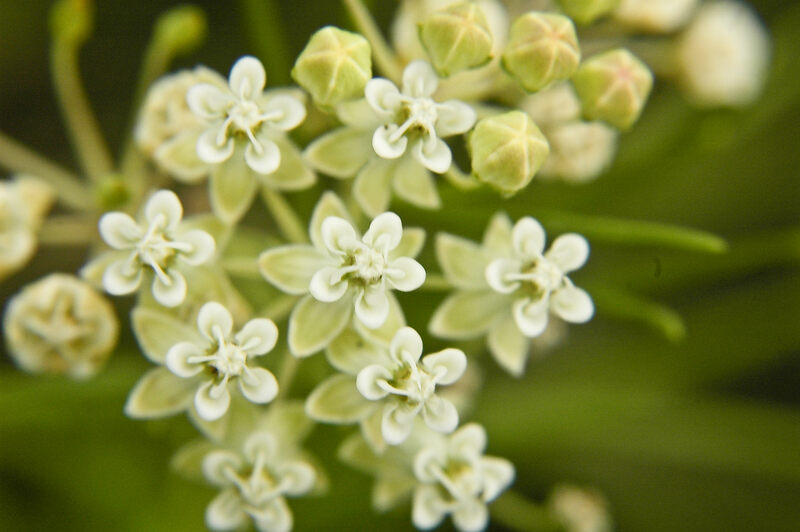
Photo Credit: Frank Mayfield / Flickr / CC BY-SA 2.0
Whorled milkweed is a haven for butterflies and the larval host for the Monarch butterfly. This single-stemmed wildflower uses a taproot system. In the wild, it can be found growing in fields, prairies, meadows, and along roadsides.
Its light green foliage consists of thin, needlelike leaves protruding from the length of its tall stems. Flowers grow in clusters from spring to fall and have a pleasant fragrance. Whorled milkweed is self-seeding and makes a great addition to garden beds and borders.
Growth habit: Herb
USDA hardiness zone: 3-9
Mature size: 1-3 feet tall and wide
Duration: Perennial
Foliage: Deciduous
Sunlight needs: Full sun; partial shade
Soil preferences: Well-drained clay, loam, or sand
Water needs: Drought-tolerant; water one inch per week during dry periods
Potential hazards: Toxic; poisonous to humans and animals
10. Woods’ Rose (Rosa woodsii)
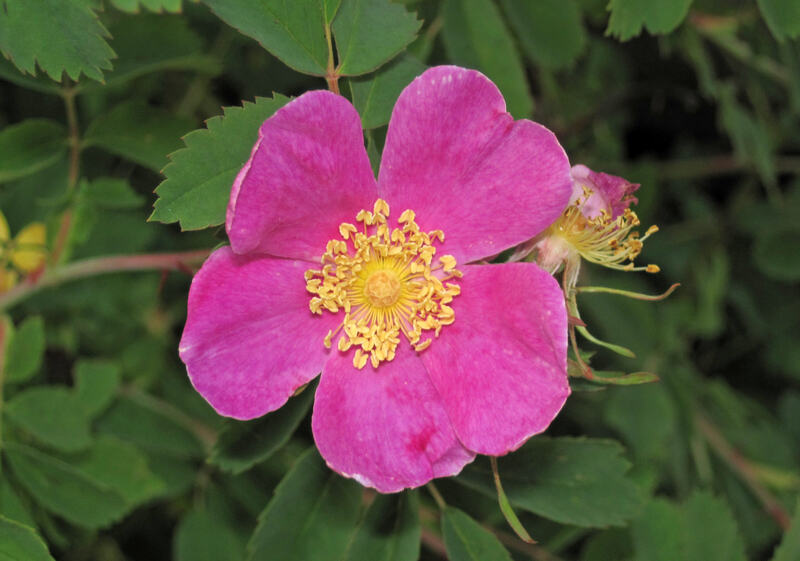
Photo Credit: James St. John / Flickr / CC BY 2.0
If you are strolling through pine forests or near streams, you might see Woods’ roses blooming in late spring and summer. The five-petaled flowers bloom in shades of pink, lilac, or lavender with bright yellow centers. They produce a sweet fragrance that attracts pollinators like bees and butterflies.
Woods’ rose’s deep green leaves are pinnately compound with serrated edges. They produce a fruit called a rose hip, which is round, cherry red, and has a glossy texture. High in Vitamin C, rose hips have medical properties and are a popular snack for birds and mammals. Plant these flowering shrubs in garden beds and along borders.
Growth habit: Shrub
USDA hardiness zone: 3-8
Mature size: 3-6 feet tall and wide
Duration: Perennial
Foliage: Deciduous
Sunlight needs: Full sun; partial shade; full shade
Soil preferences: Well-drained. Loam, clay, or sand
Water needs: Drought-tolerant; water one inch per week
Potential hazards: Non-toxic; edible except for the hairs surrounding seeds
11. Yarrow (Achillea millefolium)
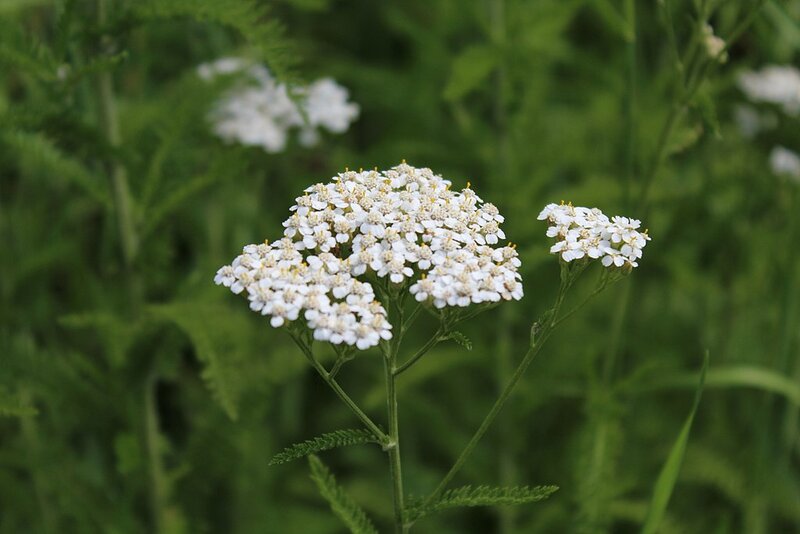
Photo Credit: Jitaeri / Wikimedia Commons / CC BY-SA 4.0
Yarrow, also known as common yarrow or white yarrow, is an adaptable plant found throughout the United States, including the Southwestern wilderness. This medicinal herb grows naturally in mountains, deserts, pine forests, meadows, and along stream banks.
Yarrow is a hardy, drought-tolerant perennial that is great for xeriscaping. It makes an excellent groundcover and addition to rock gardens. It attracts butterflies while also being pest-resistant, repelling pesky insects like ants, beetles, and flies.
Yarrow blooms from April to October, flowering in flat-topped clusters of white and pink flowers that grow atop tall stalks. It has feathery, fern-like leaves and fills the air with a fragrant aroma.
Growth habit: Herb.
USDA hardiness zone: 3-9
Mature size: 2-3 feet tall and 1-2 feet wide
Duration: Perennial
Foliage: Deciduous sometimes evergreen
Sunlight needs: Full sun; partial shade.
Soil preferences: Salt-tolerant; well-drained clay, sand, or loam sandy
Water needs: Drought-tolerant; does not require water outside of natural rainfall
Potential hazards: Toxic; poisonous to cats, dogs, and horses
How to Choose the Best Native Plants for Your New Mexico Landscape
Geographic location plays a big role in determining how well plants will perform in your landscape. Each plant requires the right soil and sunlight to grow. Before you select native plants for your yard, consider:
- The amount of sunlight in your yard
- Soil type
- Watering capabilities
- Local climate
Before installing native plants in your landscape, determine your yard’s USDA hardiness zone. New Mexico’s hardiness zones range between 4b to 8b.
- North New Mexico: 5a-7a
- Central New Mexico: 5b-7b
- South New Mexico: 7b-8b
Thanks to its hardiness zones, New Mexico’s coldest annual temperatures range between -25 to -20 degrees Fahrenheit, and all native plants are hardy to the Land of Enchantment’s lowest temperatures.
When planting your landscape, spacing is another important factor to consider. Don’t plant a large tree where it doesn’t have enough room to grow. Make sure you are accommodating for the mature size of any native plants you add to your landscape.
FAQ About the Best Native Plants for New Mexico
If you have small children or pets running around your yard, avoid adding poisonous plants to your landscape.
Poisonous natives include:
- Bracken Fern Burroweed Desert Marigold Indian Hemp New Mexico Lupine
Butterfly gardens are a great way to promote biodiversity and a healthier ecosystem by supplying butterflies, bees, and other pollinators with a source of food or a place to rest. Here are some pollinator-attracting wildflowers that thrive in New Mexico:
- Common Sunflower New Mexico Beardtongue Purple Prairie Clover Yarrow
Groundcovers can be used in place of grass for a low-maintenance landscape. Native groundcovers include:
- Agave Big Sagebrush Blue Grama Desert Willow
Where to Find Native Plants in New Mexico
Take a stroll through your neighborhood and you are bound to find native plants. Always source your landscape plants ethically and never remove plants from the wild.
Shrubs, trees, and wildflowers aren’t the only native plants you can add to your landscape. Check out New Mexico’s best grass types to add some green to your yard and be sure to check out our guide to dealing with the worst weeds in New Mexico so you are ready to protect your new native landscape.
Looking for a New Mexico lawn care pro near you? Wikilawn has trusted professionals in Albuquerque and many more cities across the Land of Enchantment.
Main Image Credit: Indian Blanket Flower / Chad Sparkes / Wikimedia Commons / CC BY-SA 3.0

